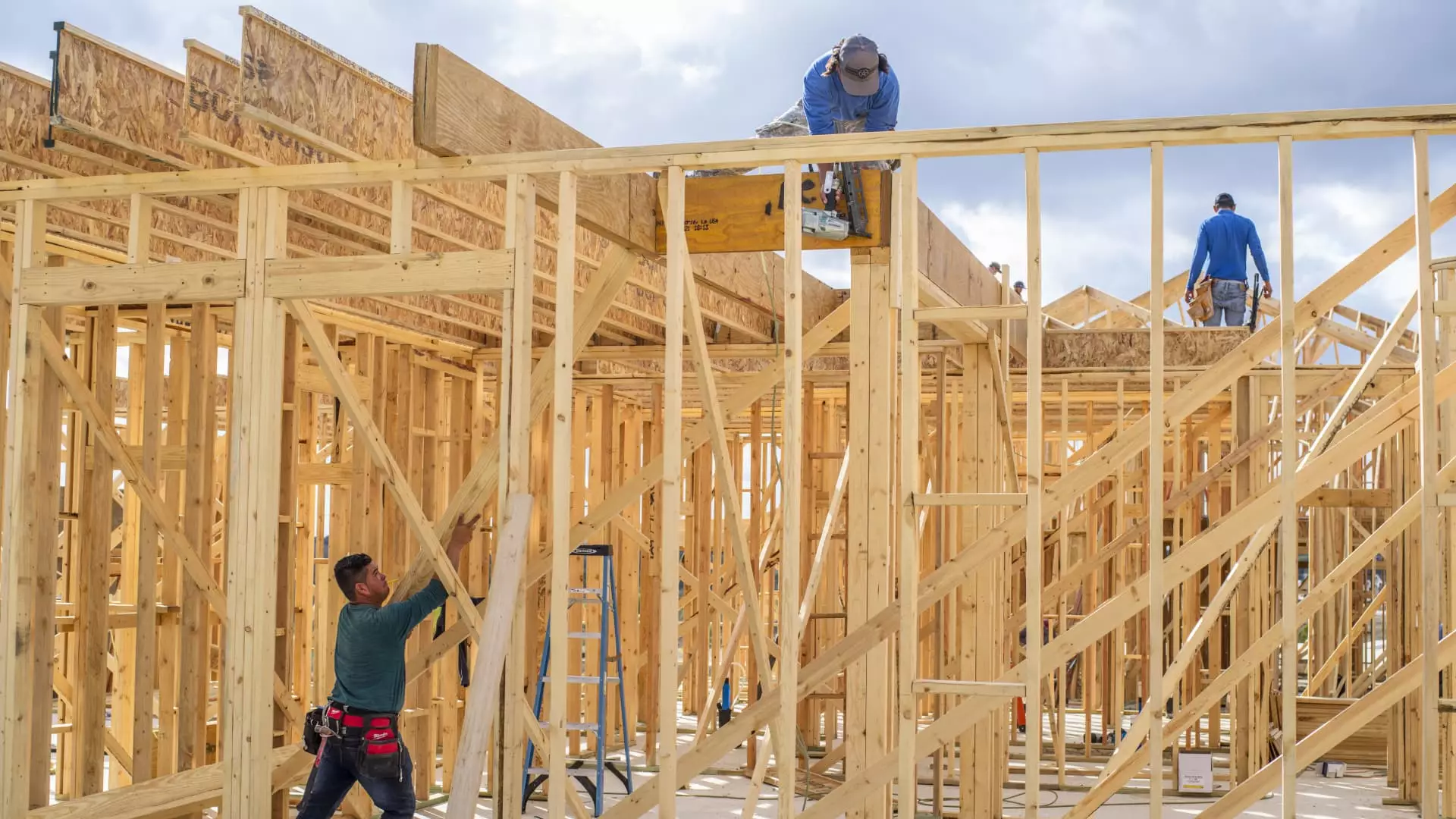The sentiment among single-family homebuilders in the United States has recently taken a significant hit, plunging to its lowest point in five months as of February. This downturn can be attributed primarily to rising concerns over tariffs, which threaten to inflate costs substantially for builders. The National Association of Home Builders (NAHB) reported a notable decline in its Housing Market Index (HMI), which sank 5 points to a reading of 42, firmly placing it below the neutral threshold of 50. When contrasted with last year’s reading of 48, the data suggests a growing malaise in the homebuilding sector—a troubling sign for an industry that plays a pivotal role in the economy.
Builders are not merely grappling with external factors; the community has expressed frustration over regulatory obstacles that seem to stifle development prospects. Carl Harris, the NAHB Chairman, succinctly summed up the sentiment by indicating that while hope exists for a shift towards more favorable pro-development policies, the ongoing uncertainty related to regulations and costs has compelled builders to lower their expectations for the future.
Examining the HMI more closely reveals a drop across all three main components of builder sentiment. Current sales conditions experienced a decline of 4 points, settling at 46, whereas buyer traffic fell by 3 points to 29. However, the most alarming statistic relates to the sales expectations for the next six months, which plummeted by 13 points to 46—marking the sharpest drop since December 2023. As the spring market, generally a vibrant period for real estate, approaches, such stats portend a weaker supply landscape.
It is critical to recognize that these developments occur against a backdrop of persistently high mortgage rates, which have spiked above 7% in early 2024. Consequently, home prices have also risen significantly compared to the previous year, collectively diminishing housing affordability. For many prospective buyers, these economic barriers are proving insurmountable, leading to a reduction in active market participants.
The anticipated implementation of tariffs, specifically those originally slated to take effect in February, complicates these challenges even further. While the start of these tariffs was postponed, there remains a heavy cloud of uncertainty weighing on builders regarding how they will manifest in actual cost increases. Robert Dietz, the chief economist at the NAHB, articulated a stark reality: with international trade comprising essential components such as 32% of appliances and 30% of softwood lumber, the potential for increased costs looms large over the construction industry.
This insight accentuates how interconnected the homebuilding industry is with global supply chains. Price increases for lumber and appliances can unwittingly ripple through the economy, squeezing builders’ margins and ultimately leading to further price hikes for consumers.
Despite a promising rebound in homebuilder sentiment from August to December 2023, the current landscape depicts a stark contrast. Reports from multiple builders reflect a sharp decline in buyer demand, a trend that correlates closely with elevated mortgage interest rates despite recent attempts by the Federal Reserve to lower short-term rates. PulteGroup’s CEO Ryan Marshall noted that these lasting high rates have directly impacted buyer sentiment, exacerbating affordability issues.
Additionally, builders have observed a reduction in the efficacy of pricing incentives. The percentage of builders reducing prices dipped to 26% in February, the lowest level recorded since May 2024. It becomes increasingly evident that traditional incentives are losing their attractiveness as more buyers find themselves priced out of the market altogether. With the buyer pool shrinking under the weight of high prices and interest rates, builders face an uphill battle—where their discounted offers are less likely to sway potential buyers who are simply unable to afford homes.
The declining sentiment among homebuilders stands as a cautionary signal about the broader health of the housing market. With high construction costs, restrictive regulatory environments, and diminished buyer traffic, the path ahead seems fraught with challenges. Addressing these issues will require concerted efforts from policy-makers, industry leaders, and community stakeholders alike, as cooperation and innovative strategies could prove essential in reversing the current trend and revitalizing the market. As it stands, the outlook for homebuilders—and prospective homeowners—remains uncertain, with caution likely prevailing in the near term.

